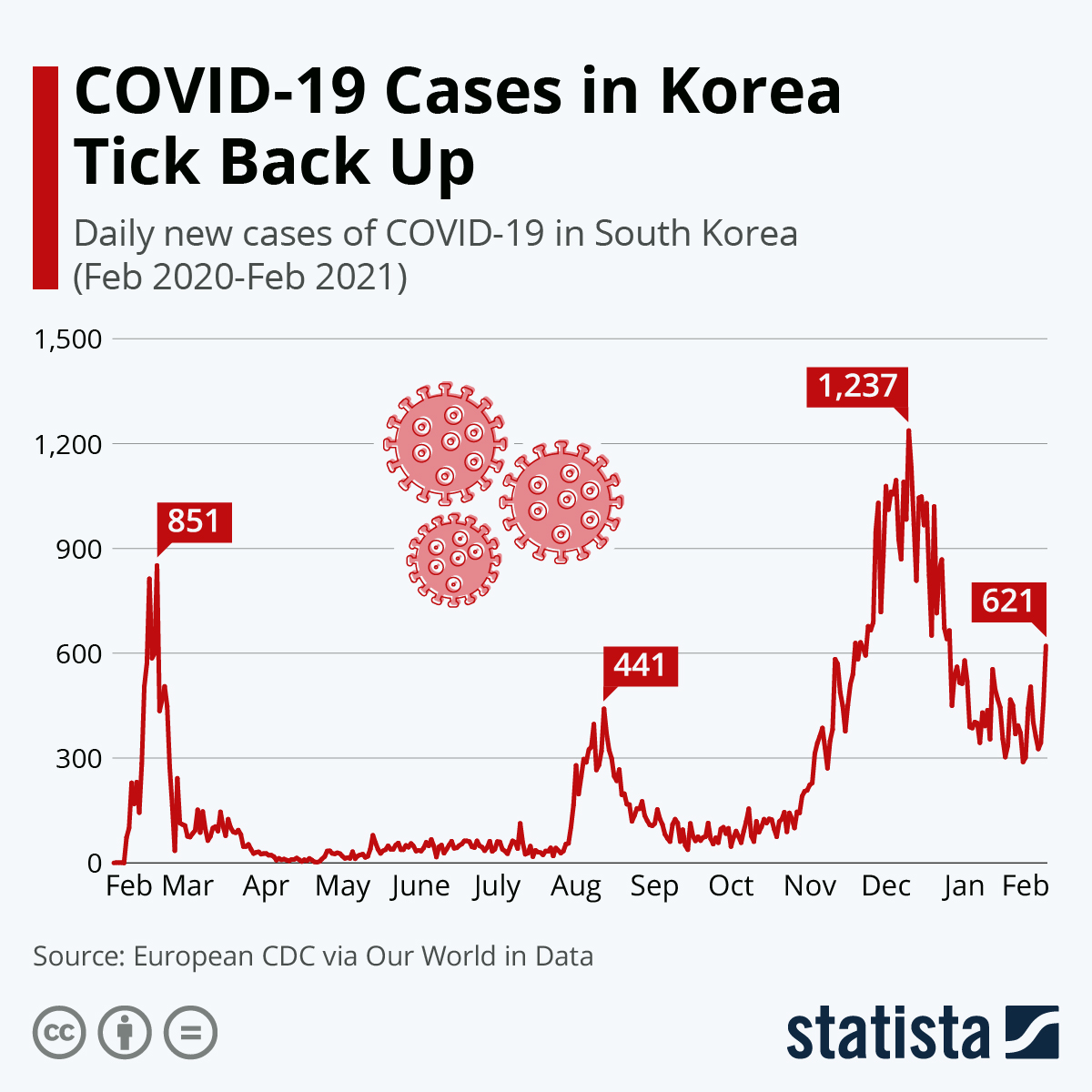https://www.zerohedge.com/covid-19/masks
Much heralded COVID-19 model-student South Korea saw new infections with the virus rise again to more than 1,000 cases per day, dramatically higher than during the first wave in February and March.
Here's CNN: "In Hong Kong, Taiwan, China, South Korea, Japan and other Asian nations, mask wearing is uncontroversial, near universal, and has been proven effective..."
Here's Forbes: "What South Korea teaches us is that ... mass production and distribution of face masks and the promotion of their use, are winning strategies in this battle."
Here's NYTimes: "The country showed that it is possible to contain the coronavirus without shutting down the economy... Television broadcasts, subway station announcements and smartphone alerts provide endless reminders to wear face masks..."
The head of the World Health Organization, Tedros Adhanom Ghebreyesus, has hailed South Korea as demonstrating that containing the virus, while difficult, “can be done.” He urged countries to “apply the lessons learned in Korea and elsewhere.”
As Statista's Willem Roper notes, the country has been praised extensively for reducing cases of COVID-19, but a continuously climbing case count shows how the threat of new outbreaks looms even after flattening the curve (twice before).
After a second outbreak in August and September was squashed, South Korea had already tightened restrictions again.
The highest number of daily new cases in the initial wave was recorded at 813 on Feb 29.

You will find more infographics at Statista
Still, these cases being recorded now are only a sliver of those detected daily in the U.S. and Europe. There, daily new case counts of COVID-19 are still in the tens of thousands... so keep wearing your masks!!!
Much heralded COVID-19 model-student South Korea saw new infections with the virus rise again to more than 1,000 cases per day, dramatically higher than during the first wave in February and March.
Here's CNN: "In Hong Kong, Taiwan, China, South Korea, Japan and other Asian nations, mask wearing is uncontroversial, near universal, and has been proven effective..."
Here's Forbes: "What South Korea teaches us is that ... mass production and distribution of face masks and the promotion of their use, are winning strategies in this battle."
Here's NYTimes: "The country showed that it is possible to contain the coronavirus without shutting down the economy... Television broadcasts, subway station announcements and smartphone alerts provide endless reminders to wear face masks..."
The head of the World Health Organization, Tedros Adhanom Ghebreyesus, has hailed South Korea as demonstrating that containing the virus, while difficult, “can be done.” He urged countries to “apply the lessons learned in Korea and elsewhere.”
As Statista's Willem Roper notes, the country has been praised extensively for reducing cases of COVID-19, but a continuously climbing case count shows how the threat of new outbreaks looms even after flattening the curve (twice before).
After a second outbreak in August and September was squashed, South Korea had already tightened restrictions again.
The highest number of daily new cases in the initial wave was recorded at 813 on Feb 29.

You will find more infographics at Statista
Still, these cases being recorded now are only a sliver of those detected daily in the U.S. and Europe. There, daily new case counts of COVID-19 are still in the tens of thousands... so keep wearing your masks!!!
🔥 🔥 🔥!!!!
This is insane! Every country that introduced mandatory masks had their case numbers explode after!! Mask don’t work!
Retweet!!!! pic.twitter.com/3VssX0WK4V
— The Epigenetic Whisperer 👉The Bodhisattva Bastard (@epigwhisp) December 16, 2020


